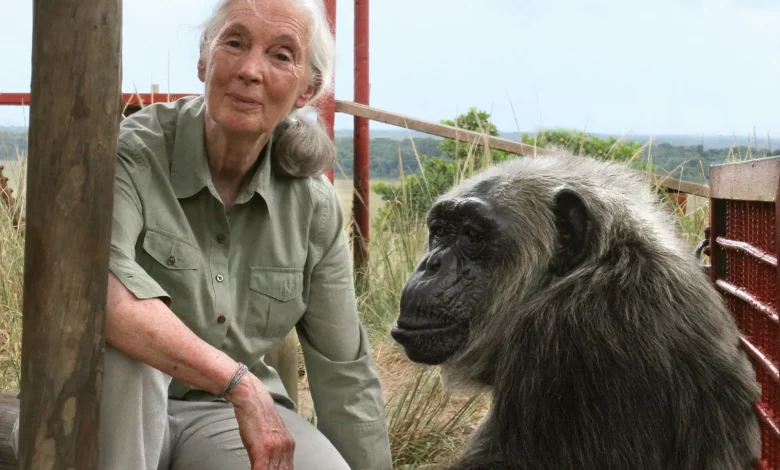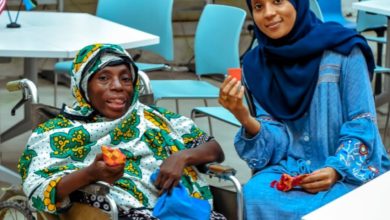Points behind President Samia, Bishop Mwamalanga eulogisation of Dr Goodall

DAR ES SALAAM: THE world has lost one of the most famous primatologist and anthropologist, Jane Goodall who is regarded as a pioneer in primate ethology.
She was best known for more than six decades of field research on the social and family life of wild chimpanzees at Gombe Stream National Park in Tanzania.
Following her death, President Samia Suluhu Hassan mourned the global renowned researcher, Dr Goodall. “With great sorrow, I have received the news of the passing of Dr Jane Goodall.
A renowned zoologist, primatologist, researcher and a friend of Tanzania. Dr Goodall’s pioneering work at Gombe National Park transformed wildlife conservation and placed our country at the heart of global efforts to protect chimpanzees and nature. Her legacy will live on. May she Rest in Peace,” President Samia wrote on her X account on Wednesday.
Beginning in 1960 under the sponsorship of Louis Leakey, Goodall’s work challenged prevailing scientific views by showing that chimpanzees make and use tools, hunt co-operatively and display complex emotions and social structures once thought unique to humans.
She later founded the Jane Goodall Institute in 1977 to promote wildlife conservation, followed by the Roots & Shoots youth programme in 1991, which grew into a global network.
Dr Goodall also established sanctuaries and reforestation projects in Africa and campaigned for the ethical treatment of animals in research, farming and captivity. Goodall was appointed a United Nations Messenger of Peace in 2002 and advised organisations such as Save the Chimps and the Society for the Protection of Underground Networks.
Goodall was a pioneer in her field, both as a female scientist in the 1960s and for her work studying the behaviour of primates. She created a path for a string of other women to follow suit, including the late Dian Fossey.
She also drew the public into the wild, partnering with the National Geographic Society to bring her beloved chimps into their lives through film, TV and magazines.
She upended scientific norms of the time, giving chimpanzees names instead of numbers, observing their distinct personalities and incorporating their family relationships and emotions into her work. She also found that, like humans, they use tools.
“We have found that, after all, there isn’t a sharp line dividing humans from the rest of the animal kingdom,” she said in a 2002 TED Talk.
As her career evolved, she shifted her focus from primatology to climate advocacy after witnessing widespread habitat devastation, urging the world to take quick and urgent action on climate change.
“We’re forgetting that we’re part of the natural world,” she told CNN in 2020. “There’s still a window of time.”
In 2003, she was appointed a Dame of the British Empire and in 2025, she received the US Presidential Medal of Freedom.
A word was also given from religious leaders and it was by Chairperson of the National Committee of Bishops and Sheikhs on Ethics, Peace and Human Rights, Bishop William Mwamalanga.
Bishop Mwamalanga said that it was with great sadness and great sorrow that the world lost Dr Goodall who was aged 91 years, whom he called “the pioneering and greatest primatologist of the 20th century and one of the famous and inspiring science leaders at the doorsteps of the 21st century.” He said that the late Dr Goodall visited Olduvai Gorge in the late 1950s when she was an assistant and secretary of the late Dr Louis Leakey, the Kenyan and British citizen.
Bishop Mwamalanga said the late Dr Goodall started working in the Gombe area on 14th July, 1960. Her mentor, Dr Leakey, persuaded her to visit Gombe, which turned out to be her PhD (Cambridge, 1965) study area and subsequent world-class primatology hotspot!
The Gombe National Park is the profound foundation for the establishment of The Jane Goodall Institute (est 1977) with offices in 35 countries operating around the world!
The late Dr Goodall was married to the late Ndugu Derek Bryceson, a cabinet minister in the independent government.
Bishop Mwamalanga, in his humble opinion said: “Please, let us (Tanzania) convince the family of the late Dr Jane Goodall to construct, the Dr Jane Goodall Mausoleum in the Gombe area where our government honoured her work by establishing the Gombe National Park in 1978.
In addition to her scientific research, Goodall published several memoirs and remained an active lecturer throughout her career, travelling extensively to promote conservation and climate action. Goodall was an honorary member of the World Future Council.
ALSO READ: ‘Only if we help shall all be saved’: Jane Goodall showed we can all be part of the solution
Among other honours, she was the recipient of the Kyoto Prize, the Templeton Prize and was awarded the United States Presidential Medal of Freedom by Joe Biden in 2025. She was on the board of the Nonhuman Rights Project from 2022 until her death.
Early life
Valerie Jane MorrisGoodall was born in April 1934 in Hampstead, London to Mortimer Herbert Morris-Goodall (1907– 2001), a businessman and Margaret Myfanwe Joseph (1906–2000), a novelist from Milford Haven, Pembrokeshire, who wrote under the name Vanne MorrisGoodall. After the family moved to Bournemouth, Goodall attended Uplands School, an independent school in nearby Poole.
When she was a child, Goodall’s father gave her a stuffed toy chimpanzee named Jubilee as an alternative to a teddy bear. Goodall had said her fondness for it sparked her early love of animals, commenting, “My mother’s friends were horrified by this toy, thinking it would frighten me and give me nightmares.” Jubilee was still on Goodall’s dresser in London as of the year 2000.
Goodall had always been drawn to animals and Africa, which brought her to the farm of a friend in the White Highlands in the Colony and Protectorate of Kenya in 1957.
From there, she obtained work as a secretary and acting on her friend’s advice, she telephoned Louis Leakey, the Kenyan archaeologist and palaeontologist, with no other thought than to make an appointment to discuss animals.
Leakey, believing that the study of existing great apes could provide indications of the behaviour of early hominids, was looking for a chimpanzee researcher, though he kept the idea to himself.
Instead, he proposed that Goodall work for him as a secretary. After obtaining approval from his co-researcher and wife, the palaeoanthropologist Mary Leakey, Louis sent Goodall to Olduvai Gorge in Tanganyika, where he laid out his plans.





